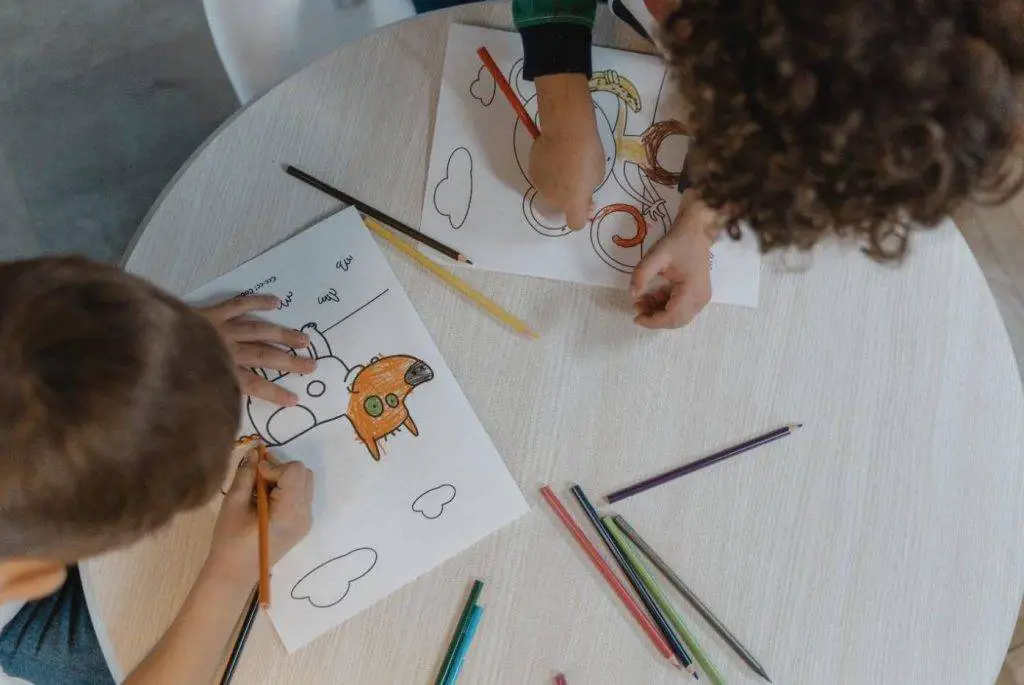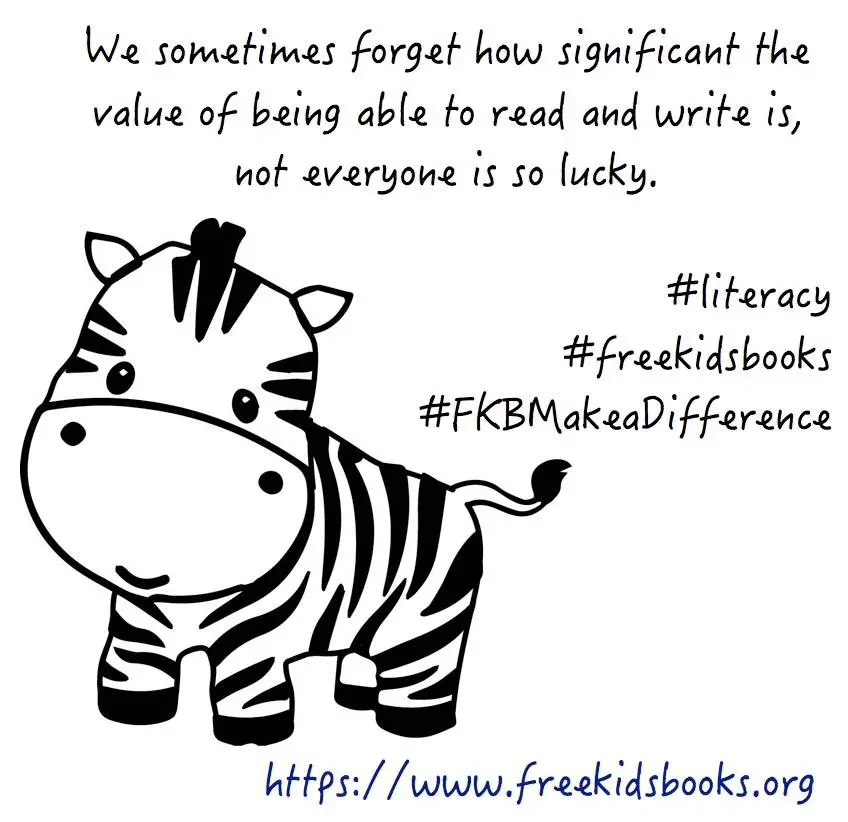Children start drawing from a very early age. From the moment children can hold pencils, they start scribbling. It is something that every child loves and does.
Drawing is incredibly important for the development of a child, both mentally and physically. So, as a parent, you should never discourage your kid from drawing.
 On the contrary, you should encourage your kids and help them develop the skill. That is because the benefits of drawing for children are undeniable. Moreover, drawing is something your children might enjoy doing for the rest of their lives.
On the contrary, you should encourage your kids and help them develop the skill. That is because the benefits of drawing for children are undeniable. Moreover, drawing is something your children might enjoy doing for the rest of their lives.
In this article, you’ll learn about all the most effective ways in which you can boost your child’s drawing skills.
6 Ways to Boost Your Child’s Drawing Skills
Simply put, to boost your child’s drawing skills, you need to boost their confidence.
You need to do anything possible that motivates them to draw, which can be done in several ways. Keep on reading to learn about the ways and how they improve your kid’s drawing skills.
1. Let Them Learn Through Exploration
Exploration is an exceptional way of getting drawing inspiration for kids and beginners.
When kids learn about new things and get new ideas, they become interested in drawing new things. They can get inspiration from different places, objects, animals, etc.
Take them to places and inspire them to observe different things so that they can draw them. Moreover, you should encourage your child to draw different things.
If they are interested in drawing animals, you can politely ask them whether they want to draw some humans, houses, objects, and other things.
Children learn a lot by exploring but you need to guide them. For instance, you can show them different arts, styles, museums, galleries, etc. You can also make them participate in competitions, workshops, and art courses.
2. Try Boosting Their Self Confidence
A simple way to keep your children motivated to draw is by encouraging them and boosting their confidence. When they are confident, they tend to enjoy drawing more and eventually become better at drawing. The smallest of praise and motivation goes a long way when it comes to encouraging young children.
You can, for instance, appreciate any artwork that your young child creates. Even if it turns out to be some random scribbles that do not make much sense, you should be encouraging.
If you point out their flaws or criticize them at an early stage, they can end up becoming frustrated. They will no longer feel enthusiastic about drawing or showing their artwork to anyone.
Positive feedback encourages children, no matter how old they are. Even teenagers need appreciation for their drawings. However, when they can understand and learn drawing, you can then point out some of the flaws they can improve.
The praises children get from parents, siblings, teachers, or friends boost their confidence a lot. You will notice a remarkable difference in their confidence level. There is no alternative to praising your child for their creativity and hard work to boost their confidence.
3. Engage with Them While Drawing
Engaging in dialogue is a great way to motivate children. When you ask them about their artwork and show interest, they feel motivated. Telling them you like their drawing reflects that you support their creative learning process. Children become more enthusiastic about doing better.
Spend time with your child when they are drawing. Ask them what they are drawing and what ideas are in their mind. Compliment them for their work. You can ask them what shapes, animals, etc., they want to draw. For those who are a bit older, you can ask them what techniques they are using, what inspired them to draw something, etc.
You can also show your support by drawing with them. You do not have to be an artist to show support. However, keep in mind that you should refrain from making too many negative comments.
Such things can have a negative effect on young children. They might also start finding flaws in their drawings rather than enjoying them.
4. Allow Them to Have Fun
Drawing is fun and kids love to have fun in every way they can!
Kids will only draw as long as they enjoy drawing. So if drawing becomes less fun for them, they might start disliking drawing. Often parents make the mistake of forcing their children to learn to draw. The children end up disliking the activity as they think it is a chore.
Drawing should come naturally, and as parents, you should allow them to have fun. Let them draw whatever they want and however they want.
Don’t confine them to following too many rules. Let them have fun with mediums or art styles. This is applicable to older children too.
Just because they are older does not mean they always have to follow the strict rules of art. Older children can have fun with coloring books and doodling too.
At first, children might enjoy drawing with pencils, crayons, markers, etc. As they grow up, they might start having an interest in technologies. You might find graphics designing and digital drawing more interesting. Have an open mind to let them enjoy drawing on those mediums too.
5. Use Age-Appropriate Drawing Methods and Materials
Initially, you should not force your child to start drawing. It must come naturally.
Once children start drawing naturally, they should be encouraged no matter what they draw. This is not the stage to learn how to draw.
As they grow older, you can start teaching them the basics and move on to advanced drawing techniques.
A 3-year-old will draw shapes or doddle random things. There is no need to rush them into drawing animals, fruits, etc. Give them full freedom to express themselves however they can through drawing.
You need to remember that you should provide them with drawing materials or mediums appropriate for their age and skill.
You cannot give a 5-year-old a graphic tablet to draw. A coloring book might be more appropriate for them. They might be more comfortable using colored pencils or crayons.
Similarly, children who are a bit older can use scissors to cut papers for crafting, but that is not suitable for toddlers.
Keep in mind that drawing at an early age is involved with children’s mental and physical development. That being said, inappropriate drawing methods or mediums can affect the development of children.
6. Enroll Your Child in an Art Course
Children get better at drawing by attending art classes. Art classes provide guidance and help for drawing. Moreover, they can explore, use their imagination, and have fun with other children while learning to draw.
For young children, drawing class is not only about learning to draw. It is also a validation that they are learning a skill and enjoying the process.
If you cannot have your child attend an art course, you can also search for online courses. There are multiple options available for children of different ages. Make sure to select a course according to your child’s age and skill. Enrolling your child in an advanced course will not help him overcome the struggles. Instead, it will make them lose hope of improving.
Even if you enroll your children in an art course, be sure to motivate and encourage them in the ways mentioned above.
Why is Drawing Important for Children?
Now you know how to boost your child’s drawing skills. However, drawing is not only a skill that children can acquire. It is more than that. Children can benefit in multiple ways through drawing.
Let’s take a look at several of the advantages of drawing for young children.
1. Drawing Helps Develop Motor Skills
For young children, drawing helps to develop motor skills. It allows children to use the movement of their hands, wrists, and fingers.
The movements through drawing improve the motor skills of young children, and they get better control of their hands. Gradually, they learn how much pressure to put, how to draw with different hand movements, and so on.
2. It Lets Children Be More Expressive
Children love drawing and often express their feelings through drawing. They draw the people they love, their pets, activities that they love doing, etc.
If you ask children what they are drawing, you will understand a lot about their favorite things as well as what they might be feeling.
3. It Improves Children’s Visual Analysis
Young children often lack fundamental visual analysis and need to develop it as they grow. For instance, they only begin to understand distance, size, etc., after getting a little older. These developments can be escalated by drawing.
When children observe things and draw them, they get the chance to understand the object and analyze, the size, distance, textures, etc.
4. Drawing Improves Children’s Hand-Eye Coordination
In addition to visual analysis, children’s hand-eye coordination is also improved by drawing.
When they see something and draw it, they eventually develop the connection between hands and eyes.
5. Drawing Helps Children Establish Concentration
With time, drawing can increase concentration in children.
When they love drawing and enjoy it, they stay focused on it. Therefore, drawing improves concentration which later reflects on other activities too.
6. Drawing Helps Children to Be Confident
When a child shows off their artwork, make sure to compliment them for their hard work. It helps them become confident and continue to put more effort into their work.
When they feel confident, they become cheerful. Children gain confidence through learning self-worth when they get validation for their work, thoughts, and experiences.
7. It Escalates Imagination
Drawing lets children’s imaginations run wild. When they draw, they think about endless possibilities and try to represent them via their drawing.
When they get the freedom to imagine, the power of imagination multiplies.
Lastly…
There is no age limit for learning to draw. However, the impact of developing drawing skills at a very young age is astonishing. The benefits children gain from drawing remain with them for the rest of their life.
It is not too hard to boost your child’s drawing skills. All you need to do is support and encourage them in the process.











